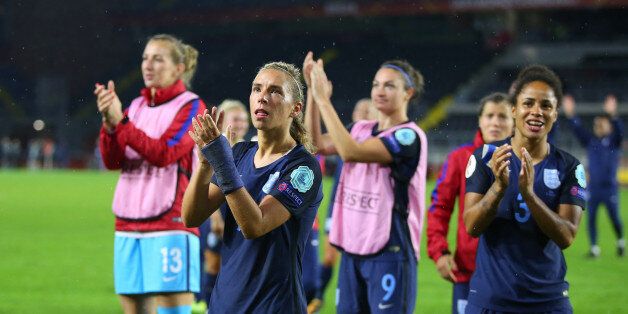
The 2017 UEFA Women's Championship is in full swing in the Netherlands, with 16 European international women's football teams facing each other. With the total combined population of all the nations taking part being over a half a billion, the women's game is set to receive a great deal of exposure in the coming weeks.
The women's game is growing; UEFA reports that the total number of registered female players across the continent now numbers over 1,270 million. The number of professional and semi-professional female players, who are paid to play, has increased from 1,303 in 2012/13, to 2,853 in 2016/17. Larger nations are leading the way in terms of number of female professional players, with England having 215, France having 126, and Russia having 110.
The growth is great to see; getting more women involved with the world's most popular sport will give young women new role models to identify with, and will hopefully help future tournaments become even bigger and help improve the standard of the women's game. The growth is thankfully a far cry from several years ago, when women's football was not given much attention or backing. Indeed many national football associations have only relatively recently recognised women's football and allowed it to be given an official status. Despite pioneers like France, Germany and Sweden, whose national football associations recognised women's football in 1970, there are others who only recently gave the game recognition, with Austria only recognising it in 2005, and even Scotland and England only recognising it in 1998 and 1993 respectively. The English Football Association (FA) actually banned women's football teams from using FA-affiliated pitches in 1921, saying that "The game of football is quite unsuitable for females and ought not to be encouraged."
The amount of money spent on women's football by many national football associations has also grown. Figures show that England, despite its late recognition of women's football, spends the largest amount in Europe on women's football, just over £13.9 million per year, while France's budget is just over £8.6 million and Germany's is just over £7.9 million. Interestingly, Iceland does not have separate budgets for men and women's football, which may ultimately be a good way to promote equality between the men and women's games, and ensure they both get the funding they need.
All teams participating in Euro 2017 will receive some prize money depending on where they finish in the tournament. All 16 teams which qualified for the group stage of the tournament receive €300,000, then those teams that reach the quarter-final will receive an additional €500,000, semi-finalists will receive an additional €700,000, the team that loses in the final will receive an additional €1,000,000, and the champion of the tournament will receive an additional €1,200,000. This shows a gender pay gap compared to the men's game, where the teams that reached the group stage of last year's men's Euro 2016 received €8,000,000, the quarter-finalists received an additional €2,500,000, semi-finalists an additional €4,000,000, the runner up an additional €5,000,000, and the eventual winner, an additional €8,000,000. This prize money pay gap is in part reflective of the tournament's broader appeal to viewers, but hopefully, as women's football continues to grow in popularity and participation, the gap should close over future tournaments.
Euro 2017 continues until Sunday August 6. The tournament so far has been exciting, and a chance for women footballers to get the spotlight. Hopefully it will lead to more growth of football for women, and the potential to one day be as popular worldwide as the men's game.